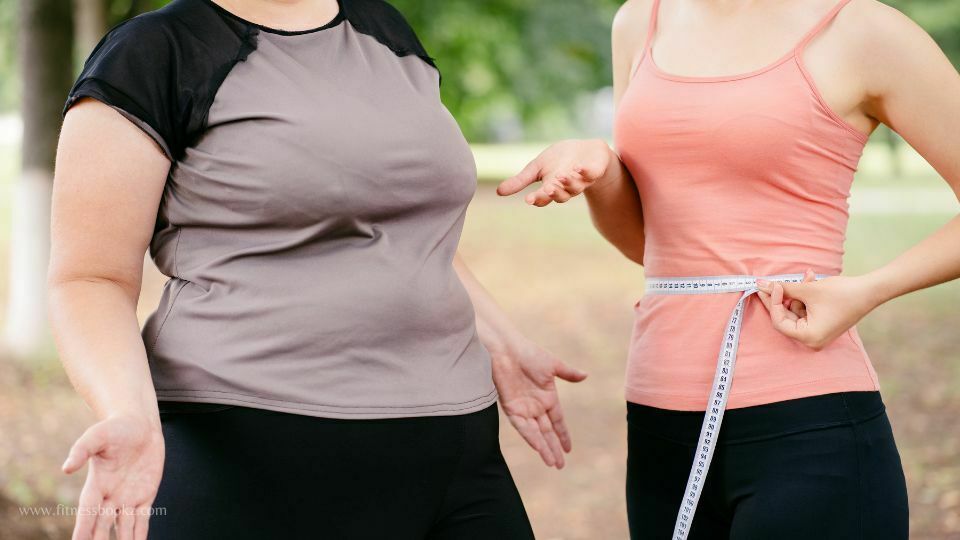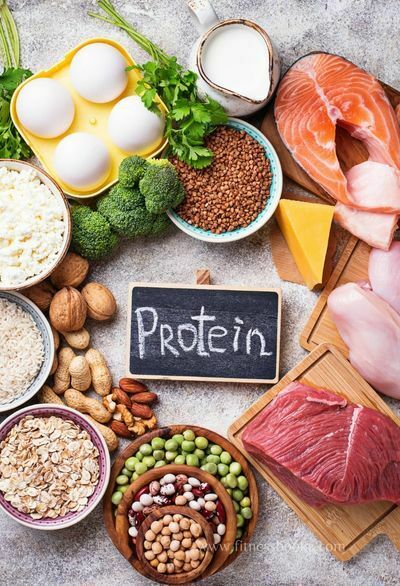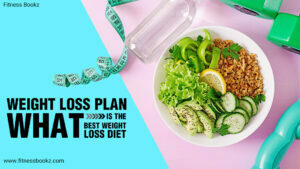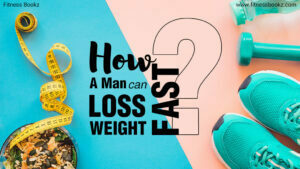
Introduction
Whether your weight loss goal is 5 pounds or 20, getting healthy and maintaining it may be a challenge. It often takes time, perseverance, and a change in food and lifestyle.
Fortunately, employing various tried-and-true methods helps streamline and speed up the process of losing weight healthfully and steadily.
A healthy weight loss rate results in a loss of between 1 and 2 pounds each week. Keeping up this pace for 5 months would result in a weight loss of 20 pounds or 2 and a half months, at a rate of 1 pound per week.
Many people who successfully lose weight can keep it off by maintaining an active lifestyle and eating a healthy, well-rounded diet.
Gaining health while losing weight is a win-win. It has been suggested that those who lose weight gradually have a better chance of keeping the weight off.
Nutritional deficiencies can lead to a lot of health problems like anemia.
What follows are the top 10 strategies for losing 20 pounds in a month rapidly and healthfully.
1. Watch Your Calorie Intake
Calorie counting may help some people start their weight loss journey. Here’s how it goes down if you want to keep track of your calorie intake.
Losing weight happens when energy expenditure exceeds energy intake, which may be accomplished by dietary restriction or increased physical activity.
Counting calories is a useful weight reduction technique when combined with other dietary and lifestyle changes.
Still, burning calories drastically is not a healthy or sustainable approach to losing weight on its own.
Keeping a food diary may help you become more aware of the empty calories in the food you consume, which can lead to better eating habits.
A mobile app may be useful for monitoring calorie intake and documenting food choices.
However, calorie tracking may exacerbate the symptoms of an eating problem in those already susceptible to it.
This might involve things like an unhealthy fixation on eating or dieting to an extreme. Avoid calorie tracking if you have a history of or are at risk of developing an eating problem.

2. Get More Protein In Your Diet
You may be able to lose 20 pounds in a month healthy and manageable way by eating more protein-rich meals.
A high-protein diet may aid in weight reduction for 6 to 12 months, as shown in research. Weight loss protein studies have been criticized for their short duration.
Researchers say that protein’s ability to influence hormone levels and metabolism may help you feel full for longer. It may also help you burn calories, a factor in weight reduction.
There are many different types of lean meats, fish, poultry, legumes, eggs, nuts, and seeds that are all excellent protein sources.
Eating foods high in protein is crucial for good health and may help you shed unwanted pounds in a month.
It helps keep your metabolism up and your muscle mass stable while reducing abdominal fat. That’s not all it’s capable of, however.
Consuming protein before a meal might help you eat less overall. You need to aim for about in terms of how much you consume.
If your calorie deficit is large enough, aim for 8-1 grams of protein per pound of body weight. When trying to shed pounds in a month, a diet heavy in protein is recommended.
A balanced diet contains all the essential micro and macronutrients that will help your body function properly.
Choosing to eat whole, nutritious foods will keep your metabolism running throughout the day, which helps your body to burn fat.

3. You Should Cut Down On The Processed Carbs
Reducing your consumption of refined carbohydrates may also be helpful in facilitating rapid losing fat.
Refined carbohydrates have a higher glycemic index because the production process removes fiber.
High glycemic index foods have a far more dramatic effect on blood sugar levels. The subsequent drop might make people feel hungrier and encourage them to eat more.
Several studies have shown that following a low glycemic index diet may help people shed excess pounds in a month.
Researchers found that adhering to a low-glycemic, low-energy diet helped regulate glucose metabolism and facilitated weight reduction.
A high-protein diet combined with a low-glycemic-index diet may be an efficient means of weight loss, according to another research.
Starting with whole-grain alternatives like barley, quinoa, brown rice, or whole wheat in place of refined grains like pasta, bread, cereals, and pre-packaged items is a good place to be if you’re trying to cut down on refined carbs.
4. Increase Your Intake Of Fiber
The digestive tract, the body as a whole, and weight loss efforts may all benefit from fiber. Soluble fiber and insoluble fiber are the two most common kinds of fiber.
Most low calorie foods that contain one also include the other, and both may be beneficial to your health.
While insoluble fiber accounts for most of what you pass in the bathroom, the research found that soluble fiber has major metabolic effects. Consuming soluble fiber may help you feel fuller for a longer period of time.
Eating foods high in dietary fiber may help patients with obesity stick to their fad diets. It helped the test groups lose weight more effectively.
Incorporating a wide variety of fruits, vegetables, whole grains, nuts, and seeds into your diet is essential for a healthy fad diet and weight maintenance because of the fiber they provide.
Weight loss is helped by fiber because it slows the digestion of undigested food, which in turn decreases calorie absorption.
Fruits, veggies, whole grains, nuts, and seeds are all good examples of foods that are rich in fiber. As an added bonus, boosting your weight loss by only 14 grams of fiber per day is easy to do.
5. You Should Begin Weight Training
Resistance training may improve strength and stamina, which entails working against a force during exercise. It consists of activities such as:
Using your own body weight in workouts like pushups and pullups along with using free weight machines.
There are several upsides to regular resistance exercise. Resistance exercise helps people maintain lean muscle mass while dieting.
Resistance training, often known as strength training, may be accomplished via the use of either free weights or your own body weight alone.
It depends on the resources you have at your disposal and your current degree of physical condition.
During your first month as a novice, you won’t need any special equipment since just using your body weight as resistance will be difficult enough.
If you’re trying to lose weight fast, it’s recommended that you focus on working out your whole body. Another viable alternative is to divide the sentence vertically.
To kick things off, check getting a gym membership or enroll in a resistance training class. You may also employ resistance equipment, like weights or bands, if you have access to it.
As an alternative, you may do bodyweight workouts at home without the need for any effective weight loss tool.
Squats/planks/lunges/push-ups are examples of such physical activity.
Start slowly and see a personal trainer to determine an appropriate baseline for your fitness level to ensure your safety.
If you have any health concerns, you should talk to your doctor before modifying your workout program. They might suggest alterations or a place to begin.
6. Including Cardiovascular Exercise In Your Regimen
Cardiovascular exercise, or cardio for short, is a kind of physical activity that raises your heart rate and helps strengthen your heart and lungs.
Additionally, it boosts calorie expenditure, which is helpful for reducing body fat and shedding excess pounds in a month.
It is recommended by the Centers for Disease Control and Prevention that adults engage in at least 150 minutes of moderate activity each week or 75 minutes of vigorous exercise.
As a means to lose weight and improve health, you may benefit from a variety of simple and fun cardio exercises, such as Walking, running, skipping rope, rowing, trekking, and riding bicycles.
These are great alternatives for those who are just starting out or who have mobility issues. You should aim for two to four 30-to-60-minute sessions of strength training and high-intensity interval training each week.
The number might be increased to three to five times a week if you weren’t already practicing high-intensity interval training. Maintain a heart rate between 50 and 85% of your maximum while exercising cardio.
Read also: How can I strengthen my legs with dumbbells?
7. Get Hydrated By Drinking More Water
The importance of water is often overlooked. Not getting enough H2O is a major contributor to individuals having problems with energy, performance, and body fat loss journey.
Consuming sufficient amounts of water may aid in weight loss by reducing hunger and keeping you feeling full longer.
Increasing your calorie expenditure, and drinking enough water may assist.
An easy technique to boost your weight reduction is to enhance your R.E.E. or resting energy expenditure. The recommended daily intake of water is 34–68 ounces.
Increased water consumption, especially if you replace higher-calorie drinks with water, may aid in weight loss. Consuming more water helped people lose weight.
Researchers discovered that drinking more water helped people lose weight and keep off more weight.
Consuming water with your meal may also help you feel satiated for longer, allowing you to consume fewer calories overall.
8. Stay On A Regular Sleeping Pattern
There’s no denying that modifying your food and increasing your physical activity are the two most significant factors in losing 20 pounds in a month fast and healthily, but you may also want to consider your sleep schedule.
Better sleep hygiene aids in avoiding obesity and promoting weight loss.
Sleep deprivation may lead to weight growth in the long run, just as getting adequate sleep might set you up for success.
Sleep hygiene involves going to bed and waking up at the same time every day, including on weekends, receiving 7 to 8 hours of sleep every night, and engaging in a tranquil nighttime routine like reading or having a relaxing shower.
Cutting down on coffee and heavy meals before the night is also a good idea. Maintaining a cool sleeping environment free of ambient light and noise is yet another great practice.
9. Eat Consciously And Slowly
Awareness of one’s internal states and a refocusing on the here and now are essential components of the mindfulness practice.
You may improve your chances of losing weight, cutting down on calories, and enjoying your meal more by eating slowly and being more conscious.
They improve your metabolic rate and help you burn calories throughout the day.
Mindful eating is not intended to help you slim down, but it often does.
One of the key components of mindfulness is developing a deeper relationship with one’s food. It may help rewire your brain so that you enjoy food without evaluating it in terms of more calories or dietary constraints.
The positive effects of eating well may be emphasized as you relish the meal. Therefore, you may avoid preoccupation with dietary restrictions.
If you’re having trouble slowing down and enjoying your meals, try reducing distractions, chewing more slowly, and sipping water as you eat. Slowing your eating pace might help you shed pounds in a month.
10. Set A Target And Remain Focused
When trying to lose weight, it might be helpful to set a target that you know you can reach and keep for the long term.
Instead of following a particular diet to shed pounds in a month, it is advised for individuals to adopt healthy eating behaviors, regular physical exercise, and stress management.
This may include dietary changes, such as incorporating more plant-based low calorie foods into your diet, increasing the number of vegetables and fruits you consume, and limiting the number of servings you take at each meal.
11. Evaluate If Your Goal Is Achievable
A weight loss of 20 pounds in one month is unhealthy and impossible to maintain. A more practical goal may be to lose weight between 4 and 8 pounds this month and maintain that weight loss during the next month.
If you want to lose 20 pounds in a month or more, setting short-term objectives may help you get there.
Finally, keeping track of your fitness and weight loss progress might help you remain accountable. Your fitness progress may be tracked by keeping a log of your running or weightlifting distance and reps.
Many individuals check their weight once a month, while others do it once a week. Avoid the scales if you have a history of eating issues.
It’s important to remember that weight loss doesn’t consider changes in body composition.
There may not be a drastic change in your weight, but your body composition may shift if you lose fat while developing lean muscle mass.
Bringing a loved one or friend along for the ride is a terrific approach to ensure you stick to your realistic weight loss goals and remain accountable.
An exercise partner may provide moral support and an additional incentive to keep exercising.
Summing Up
Changing your diet, exercise habit, and other lifestyle factors may help you lose 20 pounds in a month safely. The best way to achieve such a significant objective is to divide it into more manageable chunks, such as dropping 1-2 pounds weekly.
It’s important to be in shape, but don’t overdo it the first week. Try your hardest, but don’t deplete yourself; instead, gradually (and steadily) increase the difficulty of your exercises over time.
Don’t overdo it on the first day, or you’ll end up hurting and less motivated to keep working out. It’s wise to take it slow at first then speed up afterward.
You might lose weight initially, but it’s not sustainable and it’s easy to gain back once you start eating normally again.
On the flip side, you may be able to lose 20 lbs in a month and feel perfectly fine or even great, and then even lose another 20 lbs the following month.
Black coffee is helpful if you’re feeling tired since it has almost no calories.
Making your own pre-workout allows you to decide precisely what goes into your body, both in terms of more calories and the chemicals used. Most pre-workout supplements, however, are low in calories.
Rapid weight loss is associated with an increased risk of developing eating disorders and is not sustainable for the long term.
Those with preexisting ailments should see their doctor before beginning an exercise program. They can advise you on the best methods to begin exercising without injuring yourself.
You may achieve your weight reduction objectives more quickly if you are patient and determined and follow a healthy weight loss plan.
Read also: What are the 4 foods that boost testosterone?
FAQs
1. Is it possible to shed 20 pounds in a month?
2. How soon can you expect to see results from a 20-pound weight loss plan?
i) Keep track of your calorie intake.
ii) Have a lot more water.
iii) It would be best if you increase your protein intake.
iv) Cut down on processed sugar and flour.
v) Get started with your weight loss training.





Pingback: 15 Best Dumbbell Chest Exercises for Upper Body Workouts
Pingback: Top 12 Dumbbell Leg Exercises to Build Bigger Legs Fast
Pingback: How Much Does a Smith Machine Bar ACCURATE Weight? - Fitness Bookz